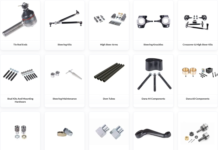Starting and running a small business comes with a rush of energy and ambition. You build something from the ground up, bring in clients, close deals, and maybe even hire your first employee. But there’s one crucial aspect of long-term success that small business owners tend to neglect: managing their money wisely. It’s easy to think that strong sales equal success, but without disciplined budgeting and saving, even profitable businesses can run into trouble. Expenses creep up, cash reserves shrink, and the margin for error gets thinner.
The key isn’t just making money—it’s keeping enough of it to grow with confidence and weather the unpredictable.
This guide offers practical strategies that help you handle your finances with intention, not just intuition.
1. Know Your Numbers: The Foundation of Good Decisions
You can’t budget or save effectively if you don’t have a clear picture of your income and expenses. Knowing your numbers means understanding exactly how much your business earns, what it spends, and what’s left over. Have a look at your fixed costs like rent, salaries, and subscriptions. Then track your variable expenses, which can include things like supplies, utilities, and shipping. Don’t rely on rough estimates. Use simple accounting tools like QuickBooks, Xero, or even Excel to record your transactions and review your financial health regularly. This will make it easier to identify unnecessary spending and make informed decisions about future investments.
2. Use Creative Savings Challenges: Try the 100 Envelope Strategy
Saving money doesn’t always have to be complex or boring. For business owners who like a more interactive or visual approach, savings challenges can offer structure and motivation. One method that’s gained popularity is the 100 envelope challenge. It’s often used in personal finance, but the core idea applies easily to business savings too.
If you’re wondering how to do the 100 envelope challenge, here’s the basic idea: label 100 envelopes with the numbers 1 to 100. Each day or week, randomly choose one and save that amount in dollars. When all envelopes are filled, you’ll have saved $5,050. This can be done digitally through banking apps or kept physically, depending on your preference.
For business use, this challenge could fund a new piece of equipment, a marketing campaign, or part of your emergency fund.
3. Is Your Business Prepared for an Emergency?
A sudden dip in sales, delayed client payments, or a broken piece of equipment can hit your business hard. That’s where an emergency fund becomes invaluable. It’s not about being overly cautious; it’s about being prepared. You must ideally save enough to cover at least three to six months’ worth of operating costs.
Setting this up can be simple: open a separate account and transfer a fixed percentage of revenue into it regularly. Automating these transfers reduces the temptation to skip a month and ensures steady progress. When a crisis comes, having that cushion gives you time to adjust instead of panicking.
4. Pay Yourself First — On Purpose
Many small business owners fall into the trap of reinvesting every dollar back into the business and leaving themselves last. This doesn’t just affect your personal life; it can also blur the lines between business and personal finances. Paying yourself a consistent salary or owner’s draw creates discipline. It sets a financial boundary that keeps your business accountable and helps you manage your household expenses without stress. If you’re not sure how much to pay yourself, base it on your profits and industry norms, but start with a number that reflects the value of your time and effort.
5. Embrace the 50/30/20 Rule — Business Edition
Budgeting doesn’t have to be complicated to be effective. The 50/30/20 rule, often used in personal finance, works well in a business context too. Allocate around 50% of your revenue toward operational costs like rent, payroll, and inventory. Reserve 30% for reinvestment—this could mean marketing, equipment, or training. The remaining 20% should go into savings, debt repayment, or emergency reserves. You can adjust these percentages to fit your business type, but the structure helps create boundaries that protect your cash flow.
6. Use Multiple Bank Accounts to Organize Cash Flow
Managing money from a single account can lead to confusion and impulsive decisions. When all your revenue, expenses, taxes, and profits sit in one place, it becomes difficult to know how much money is actually available. A more organized approach involves using multiple bank accounts with specific purposes. At minimum, set up separate accounts for operations, taxes, savings, and profit. This system forces you to assign every dollar a job and prevents you from spending funds that should be reserved for other needs. For example, when tax time comes, you’ll already have a dedicated account with the necessary funds waiting—no scrambling required. This method gives you clarity and control over where your money goes, making it much easier to stick to a budget.
7. Review Your Budget Monthly (Not Just Yearly)
One of the most common mistakes small business owners make is setting a budget once a year and never revisiting it. But business finances are dynamic. Expenses fluctuate, clients change, and goals evolve. Waiting until the end of the year to review your numbers leaves too much room for inefficiencies to snowball. Instead, carve out time each month to assess your budget. Compare your actual expenses to what you planned. Look at what’s working and what’s not. Did you overspend on marketing? Is your profit margin shrinking? Catching these shifts early allows you to course-correct quickly, avoid debt, and stay aligned with your financial goals.
8. Reinvest Wisely and With Purpose
It’s tempting to pour every extra dollar into growth—whether that’s hiring, expanding, or upgrading equipment. But reinvesting without a clear plan can create more problems than it solves. Instead, set specific milestones that trigger reinvestment. For example, only hire a new team member once you’ve consistently met a revenue goal for three months. Or delay a major purchase until your emergency fund reaches a set amount. Reinvestment should feel like a reward for stability, not a distraction from it.
Small business success isn’t built on big wins; rather, it’s built on smart habits. Saving and budgeting are not about restriction; they’re about control and confidence. By following these strategies, you create a strong financial framework. This structure doesn’t just help you survive tough times—it positions you to grow with clarity and purpose. Every dollar has a job, and every decision has a plan. That’s how small businesses stay resilient, profitable, and ready for what’s next.





























